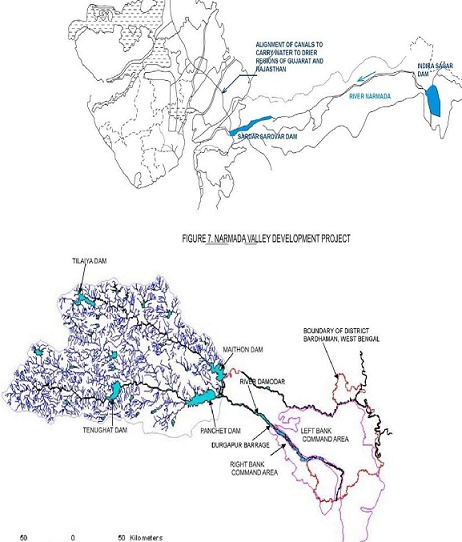Chapter: Civil : Water Resources and Irrigation Engineering : Reservoir Planning and Management
Water Reservoir
Water Reservoir
INTRODUCTION
In the process of illustrating the
primary functions of a reservoir engineer, namely, the estimation of hydrocarbons in place, the
calculation of a recovery factor and the attachment of a time scale to the
recovery; this page introduces many of the fundamental concepts in reservoir
engineering.
ü The
description of the calculation of oil in place concentrates largely on the
determination of fluid pressure regimes and the problem of locating fluid
contacts in the reservoir.
ü Primary
recovery is described in general terms by considering the significance of the
isothermal compressibility of the reservoir fluids; while the
determination of the recovery factor and
attachment of a time scale are illustrated by
describing volumetric gas reservoir
engineering.
ü The
chapter finishes with a brief quantitative account of the phase behavior of
multi-component hydrocarbon systems.
Operation of
system of reservoirs
ü It
is not very uncommonystem‟toffindreservoirsagroup river or in a river and its
tributaries. An example of the former are the dams
proposed on the river Narmada (Figure 7)
and an example of the latter are the dams of the Dam odor Valley project
(Figure 8).
ü In
case of system of reservoirs, it is necessary to adopt a strategy for
integrated operated of reservoirs to achieve optimum utilization of the water
resources available and to benefit the best out of the reservoir system.
ü In
the preparation of regulation plans for an integrated operation of system of
reservoirs, principles applicable to separate units are first applied to the
individual reservoirs.

VOLUMETRIC GAS
RESERVOIR ENGINEERING
ü Volumetric
gas reservoir engineering is introduced at this early stage in the book because
of the relative simplicity of the subject.
ü lt
will therefore be used to illustrate how a recovery factor can be determined
and a time scale attached to the recovery.
ü The
reason for the simplicity is because gas is one of the few substances whose
state,
as
defined by pressure, volume and temperature (PVT), can be described by a
simple
relation
involving all three parameters.
One other such substance is saturated
steam, but for oil containing dissolved gas, for instance, no such relation
exists and, as shown in Chapter 2, PVT parameters must be empirically derived
which serve the purpose of defining the state of the mixture.
RESERVOIR DRIVE
MECHANISMS
ü
If none of the terms in the material balance equation can be neglected, then
the reservoir can be described as having a combination drive in which all
possible
sources
of energy contribute a
significant part in producing the reservoir fluids and determining
the
primary recovery factor.
ü In
many cases, however, reservoirs can be singled out as having predominantly one
main type of drive mechanism in comparison to which all other mechanisms have a
negligible effect.
ü In
the following sections, such reservoirs will be described in order to isolate
and study the contribution of the individual components in the material balance
in influencing the recovery factor and determining the production policy of the
field.
ü The
mechanisms which will be studied are:
-
solution gas drive
-
gas cap drive
-
natural water drive
-
compaction drive
ü And
these individual reservoir drive mechanisms will be investigated in terms of:
reducing the material balance to a compact form, in many cases using the
technique of Helena and Odeh, in order to quantify reservoir performance
MATERIAL BALANCE
APPLIED TO OIL RESERVOIRS
- determining the main producing
characteristics, the producing gas oil ratio and water cut
-
determining the pressure decline in the
reservoir
-
estimating the primary recovery factor
-
investigating the possibilities of
increasing the primary recovery.
Related Topics